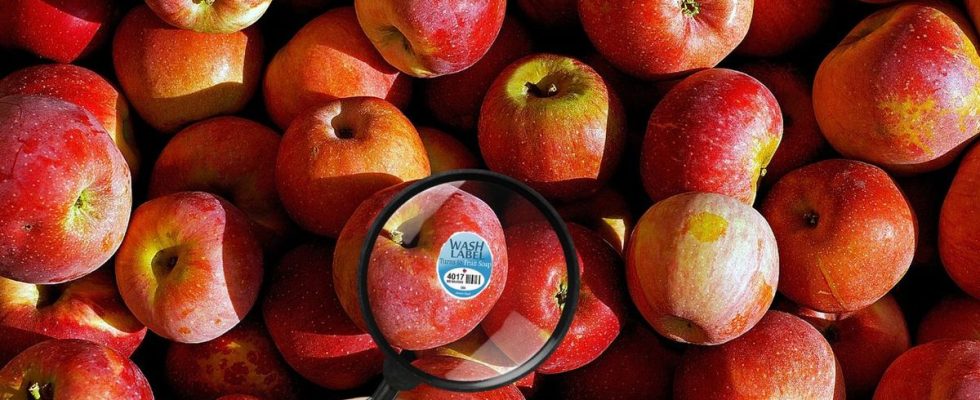If, like Jacques Chirac, you are an apple eater, you are undoubtedly used to the little labels stuck on fruit. But have you ever wondered what the numbers on the inscription are hiding? According to a viral publication shared at the end of October on Facebook, the figures have specific codes allowing us to know the origin and especially the type of production behind our fruits.
If the label is four numbers long and starts with a 3 or 4, the apple would be full of pesticides. If there are five numbers and the first number is 9, the apple would come from organic farming. Finally, if there is a five number but the first is 8, the fruit would have been genetically modified. “This is the most dangerous thing,” the text warns.
The explanation is difficult to digest, but above all it is false. 20 minutes reveals to you what is hidden behind these numbers.
FAKE OFF
These labels, in mass retail jargon, are called “PLU” or “Price look up codes”. In French, the term is used identically, but it could be translated as a “price search code”. These small labels, with four to five digit numbers, are used to identify fruits and vegetables in order to facilitate their inspection at the checkout. No code is chosen at random and there are only 1,400 in total.
Internationally, it is IFPS (International Federation for Produce Standards) which prioritizes and assigns codes to each product. “The PLU number identifies products based on various attributes that may include product, variety, growing methodology (e.g. organic), and size,” the site explains. But not all the explanations present in the initial text are correct.
Statement 1: “If there are four numbers and the first number is 3 or 4, it means that this fruit has been sprayed with pesticides.” It’s wrong
All products marked with a four-digit code concern conventionally grown products, details the IFPS website. “The 4-digit PLU codes for products are randomly assigned within a series of digits within between the numbers 3,000 and 4,000.” But all are chosen very randomly.
Statement 2: “If the number of digits is 5 and the first digit is 9, this indicates that this fruit or vegetable is organic.” It’s true
As the initial text explains, organic products are indeed marked with the number 9, but it is only a prefix. “You will not see five-digit organic codes in the PLU code database, because they are simply prefixes added to the PLU codes of conventionally grown produce,” IFPS points out.
Statement 3: “If the number of digits is 5 and the first digit is 8, it means that the fruit or vegetable has been genetically modified.” It’s wrong
Previously, a prefix also existed to identify products with GMOs, the number “8”. But this code has evolved, explains the IFPS in a press release published in January 2023. “The prefix was never used in retail”, because in reality very few existed. In the future, codes “83.000” or “84.000” may be stuck on our apples in supermarkets, but this will no longer have the same meaning. Indeed, over the years, the IFPS has needed to increase the number of references given the exponential number of existing products on the shelves.
Moreover, on his websitethe Ministry of Agriculture recalls that “the cultivation of GMOs (Genetically Modified Organisms) for commercial purposes has been prohibited in France since 2008”.

